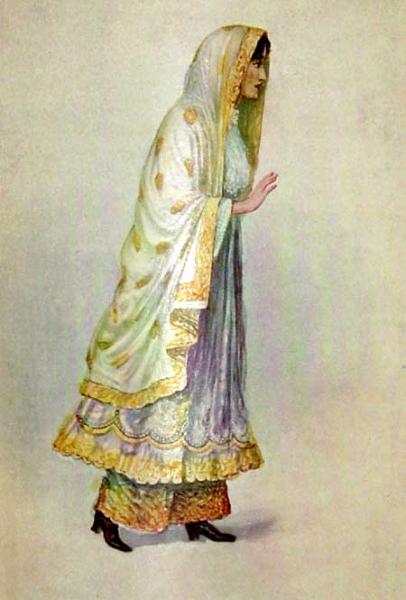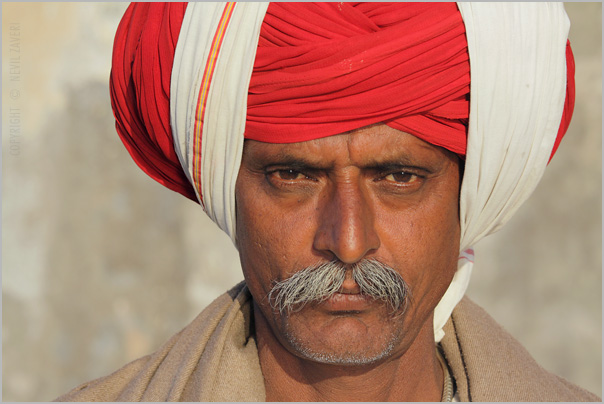|
Balambha
Balambha is a village in Jodiya taluka of Jamnagar District of Gujarat in India. The taluka headquarters of Jodiya is at a distance of 20 km and Jamnagar city at a distance of 60 km. The Dadhiari Dam on Aji river is at a distance of only 1 km. After 6th January 2001earthquake Balambha village peoples live in three different parts of village 1) old balambha, 2) Shanti Nagar and 3) Binadhar. History Balambha has a strong inner citadel. This is said in the ''Tarikh-i-Sorath'' by Ranchhodji Diwan to have been built by Rao Deshalji I of Cutch State in 1714, but its construction is popularly ascribed to Meraman Khavas. Probably the Rao first built a small citadel in 1714, afterwards strengthened and enlarged by Meraman Khavas in 1784. The river Aji, which flows by Rajkot, falls into the Little Rann of Kutch at a distance of about six miles from Balambha. There is a hillock in the lands of Balambha called Bina where there is a Chapter spring of fresh water called the N ... [...More Info...] [...Related Items...] OR: [Wikipedia] [Google] [Baidu] |
Jodiya
Jodia (also spelled Jodiya) is a town in Jamnagar district, Gujarat, India India, officially the Republic of India (Hindi: ), is a country in South Asia. It is the seventh-largest country by area, the second-most populous country, and the most populous democracy in the world. Bounded by the Indian Ocean on the so .... Jodia was the well-known port of India before 1947. It has a sainik school located at Balachadi. It is the birthplace of Gunateet Swami. There is a clothes and a fish market. Future Development Gujarat Water Infrastructure Limited (GWIL) has signed an MOU with Essel InfraProjects to develop a 100 million liters per day (MLD) seawater desalination plant at the port of Jodia. This treatment plant will provide water for to the water grid of Gujarat for the next 25 years. The project will boost supplies to Jamnagar, Rajkot and Morbi cities along with the other adjoining areas. References Cities and towns in Jamnagar district Ports and harbours of Guja ... [...More Info...] [...Related Items...] OR: [Wikipedia] [Google] [Baidu] |
Gurjar Kshatriya Kadia
Gurjar Kshatriya Kadia, also known as Gurjar Kadia/ Gujjar Kadia, and Kadia Kshatriya are a Hindu community mostly in Gujarat and Maharashtra. They are artisan community, occupation is masonry work and are related to larger artisan group of Kadias. Distribution They are found in Saurashtra region of Gujarat specifically in the districts of Junagadh, Vadodara, Surat, Amreli and Jamnagar. They are said to have founded thirty six villages in the Halar Region of Jamnagar district. Outside, Gujarat, community members live mainly in Maharashtra in cities of Mumbai, Pune, Nagpur. The community members also live in Dhanbad, Jharia and Kolkata. Further, the migrant population is found in East Africa Religion and customs The community follows Hindu rituals and Hindu gods and goddess. They worship Lord Swaminarayan, Lord Krishna, Lord Rama, Vishwakarma, the Hindu presiding deity of all craftsmen and architects and their Kuladevata and Shurapuras. The community members attend the S ... [...More Info...] [...Related Items...] OR: [Wikipedia] [Google] [Baidu] |
Khoja
The Khojas ( sd}; gu, ખોજા, hi, ख़ोजा) are a mainly Nizari Isma'ili Shia community of people originating in Gujarat, India. Derived from the Persian Khwaja, a term of honor, the word Khoja is used to refer to Lohana Rajputs or Baniya castes who converted to Islam from Hinduism. They are historically members of the Bania groups converted to Islam by Muslim pirs (saints). In India, most Khojas live in the states of Gujarat, Maharashtra, Rajasthan and the city of Hyderabad. Many Khojas have also migrated and settled over the centuries in East Africa, the Caribbean, Europe and North America. The Khoja were by then adherents of Nizari Isma'ilism. In the late 19th and early 20th centuries, particularly in the aftermath of the Aga Khan Case a significant minority separated and adopted Sunni Islam and Twelver shi'ism, while the majority remained Nizari Isma'ili. In Pakistan, most Khoja live in Karachi in Sindh province. Etymology The term ''Khoja'' derives from ... [...More Info...] [...Related Items...] OR: [Wikipedia] [Google] [Baidu] |
Koli People
The Koli is an Indian caste found in Rajasthan, Himachal Pradesh, Gujarat, Maharashtra, Uttar Pradesh, Haryana, Karnataka, Odisha and Jammu and Kashmir states in India. Koli is an agriculturist caste of Gujarat but in coastal areas they also work as fishermen along with agriculture. In the beginning of 20th century, the Koli caste was recognised as a Criminal Tribe under Criminal Tribes Act by British Indian government because of their anti-social activities during World War I. The Koli caste forms the largest caste-cluster in Gujarat and Himachal Pradesh, comprising 24% and 30% of the total population in those states respectively. History Early There has historically been some difficulty in identifying people as Koli or as Bhil people in what is now the state of Gujarat. The two communities co-existed in the hills of that area and even today there is confusion regarding their identity, not helped, in the opinion of sociologist Arvind Shah, by there being "hardly ... [...More Info...] [...Related Items...] OR: [Wikipedia] [Google] [Baidu] |
Brahmin
Brahmin (; sa, ब्राह्मण, brāhmaṇa) is a varna as well as a caste within Hindu society. The Brahmins are designated as the priestly class as they serve as priests (purohit, pandit, or pujari) and religious teachers (guru or acharya). The other three varnas are the Kshatriya, Vaishya and Shudra. The traditional occupation of Brahmins is that of priesthood at the Hindu temples or at socio-religious ceremonies, and rite of passage rituals such as solemnising a wedding with hymns and prayers.James Lochtefeld (2002), Brahmin, The Illustrated Encyclopedia of Hinduism, Vol. 1: A–M, Rosen Publishing, , page 125 Traditionally, the Brahmins are accorded the highest ritual status of the four social classes. Their livelihood is prescribed to be one of strict austerity and voluntary poverty ("A Brahmin should acquire what just suffices for the time, what he earns he should spend all that the same day"). In practice, Indian texts suggest that some Brahmins historicall ... [...More Info...] [...Related Items...] OR: [Wikipedia] [Google] [Baidu] |
Bharvad
The Bharwad, also known as gadaria, are a Hindu caste found in the state of Gujarat in India, primarily engaged in herding livestock. History The Bharwads claim they are the descendants of (Hinduism). According to Sudipta Mitra, historians believe the Bharwards arrived in northern Gujarat in the 10th century, fleeing the Muslim conquest of Sindh, Muslim invasions of Sindh. They then spread out throughout Saurashtra (region), Saurashtra. Divisions Of the various reasons given for the division between Motabhai and Nanabhai, the most popular is that brothers were ordered by Krishna to take their flocks to different places. The older of the brothers went on to marry a Bharwad woman while the other married a Mistress (lover), other woman. Since the latter was a marriage outside the community, the offspring were deemed to be untouchability, ritually polluted. Thus the Motabhai (literally, "big brother") descend from the first and the Nanabhai ("little brother") from the latter. ... [...More Info...] [...Related Items...] OR: [Wikipedia] [Google] [Baidu] |
Lohana
Lohana, also referred to as Loharana, Thakkar and Lohrana, are an Indian trading or mercantile ''jāti''. Lohanas claim to be descendants of the Lava, son of Rama, and to descend from the Raghuvanshi dynasty.Lachaier, Pierre. "Cérémonies D'hommage à Sarasvatī Et Aides à L'éducation Chez Les Lohāṇā De Pune." Bulletin De L'École Française D'Extrême-Orient 94 (2007): 27-58. Accessed November 2, 2020. http://www.jstor.org/stable/43733204. The Lohanas are divided into many separate cultural groups as a result of centuries apart in different regions. Thus there are significant differences between the culture, language, professions and societies of Gujarati Lohanas, Sindhi Lohanas, and Kutchi Lohanas. Origin According to historian Richard Burton, Lohanas originate in Lohanpur in Multan district of Punjab (now in Pakistan). Matthew A. Cook adds that according to Burton, Lohana's largely Punjabi origin can be considered on basis of "features and manners, ceremonies and ... [...More Info...] [...Related Items...] OR: [Wikipedia] [Google] [Baidu] |
Junagadh
Junagadh () is the headquarters of Junagadh district in the Indian state of Gujarat. Located at the foot of the Girnar hills, southwest of Ahmedabad and Gandhinagar (the state capital), it is the seventh largest city in the state. Literally translated, Junagadh means "Old Fort". After a brief struggle between India and Pakistan, Junagadh voted to join India in a plebiscite held on 20 February 1948. It was a part of Saurashtra state and later Bombay state. In 1960, in consequence of the Maha Gujarat movement, it became part of the newly formed Gujarat state. History Early history As per the legend, the founder of the Ror Dynasty Raja Dhaj, Ror Kumar, alias Rai Dyach, ruled over the principality of Jhunagarh in the fifth century BC. An early structure, Uparkot Fort, is located on a plateau in the middle of town. It was originally built in 319 BCE during the Mauryan dynasty by Chandragupta. The fort remained in use until the 6th century, when it was abandoned for about 3 ... [...More Info...] [...Related Items...] OR: [Wikipedia] [Google] [Baidu] |
Jamnagar District
Jamnagar District is a district of Gujarat in Western India. Its headquarters are located in the eponymous city of Jamnagar. It hosts the production facilities of large Indian companies such as Reliance. Among its attractions are several palaces, a Marine National Park and a Bird Sanctuary, known as Khijadiya Bird Sanctuary. In 2013, Devbhoomi Dwarka district was carved out of the western part of the district. Talukas (administrative divisions) # Jam Jodhpur # Jodiya # Dhrol # Jamnagar #Jamnagar Rural # Lalpur # Kalavad Taluka Demographics According to the 2011 census Jamnagar district has a population of 2,160,119, roughly equal to the nation of Namibia or the US state of New Mexico. This gives it a district population ranking of 212th in India (out of a total of 640). The district has a population density of . Its population growth rate over the decade 2001-2011 was 13.38%. Jamnagar has a sex ratio of 938 females for every 1000 males. It had literacy rate of 66.4% in ... [...More Info...] [...Related Items...] OR: [Wikipedia] [Google] [Baidu] |
Little Rann Of Kutch
The Little Rann of Kutch is a salt marsh which is part of the Rann of Kutch in Kutch district, Gujarat, India. Attractions Indian wild ass sanctuary The Little Rann of Kutch is home to the Indian wild ass (khur). To conserve this species, the Indian Wild Ass Sanctuary (IWAS) was created in 1973 and covers nearly five thousand square km. The sanctuary is also home to many species of migratory birds, such as the sarus crane, ducks, the Dalmatian pelican, and flamingoes, as well as land birds like the sandgrouse, the francolin and the Indian bustard. It is also home to various mammals such as the Indian wolf, desert fox and nilgai. Kutch biosphere reserve In 2008, to project Kutch as an international nature destination, the Government of Gujarat designated the area as the Kutch Biosphere Reserve. Biosphere reserves aim to promote sustainable development in the surrounding area, which is reserved for conservation and research. Such reserves are protected under the W ... [...More Info...] [...Related Items...] OR: [Wikipedia] [Google] [Baidu] |


_Bhumi_Puja%2C_yajna.jpg)

.jpg)

